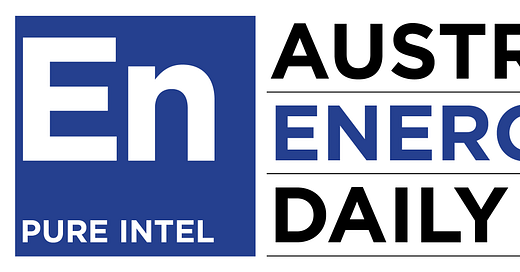Day 124: 'More than 15 years of uncertainty'
An introductory weekday newsletter from Schwartz Media. Counting the days since Australia had an energy policy.

Good morning and welcome to day 124.
Today in summary: there’s a whole lot of reports for the end of the year. The AEMC says power prices will drop in the next two years; coal will become Australia’s biggest export in 2019; and the COAG Energy Security Board has slammed the state of the NEM.
— Sophie
Today’s policy spin level: 💨💨💨💨
This is the final edition of Australian Energy Daily for 2018. Thanks for the support this year - we’ll be back in January, and we’ve got some changes coming in 2019, which you can read about here. Have a safe and happy holidays!
Please don’t keep Australian Energy Daily to yourself. Forward this email to your colleagues and encourage them to sign up for free here.
The Australian Energy Market Commission’s annual report on what’s driving electricity prices says most Australians can expect lower bills over the next two years, as a huge amount of new renewable generation comes online while demand is relatively flat. Overall bills will drop 2.1% by 2021. Generation prices are expected to fall 10.2% in that time, while green scheme prices rise 4% and poles and wire prices increase 2.5%. The AEMC said:
“The challenge going forward is to continue balancing supply and demand across the nation as the energy sector restructures. Network poles and wires account for up to half of consumer bills, depending on where you live. Managing the costs of connecting new generation will be a major challenge.”
Coal will become Australia’s most valuable export this financial year, overtaking iron ore for the first time in nine years. The December quarterly report from the federal Department of Industry, Innovation and Science says that thermal and coking coal export values will reach A$67 billion in 2018-19, ahead of iron ore at A$61 billion. Chief economist Mark Cully said the combination of a weaker exchange rate outlook and the strength of prices for thermal coal and oil has led it to revise up its forecasts, and:
“Strong world demand and some concerns over supply have helped keep the prices of oil and thermal coal relatively high over the past quarter, boosting the prospects for Australian export earnings over the outlook period.”
The COAG Energy Security Board’s annual Health of the National Electricity Market report rates the health of all six key areas of the system somewhere between moderate and critical, with its outlook for the security and reliability of the system critical.
It says that despite some signs of price improvement:
“Electricity retailers are not delivering for consumers”;
“The NEM is no longer as resilient to disruptions as it used to be”;
“More than 15 years of uncertainty around the integration of energy and climate policy has reduced policy confidence in the NEM and distorted generation investment and disinvestment decisions in the sector” and;
“At a time when investment is needed in dispatchable generation and to action the ISP, it is not helpful for the Commonwealth Government to be threatening powers of divestment, price setting and discretionary asset write-downs.”
The Commentariat
At the AFR, Phillip Coorey writes that NSW’s state government is trying to avoid a repeat of the Victorian state election, where Vic’s Liberals were tarred with the federal government’s brush, when its constituents go to the polls in March.
“A week before Christmas, the NSW government gave notice it was not going to become another casualty of the unpopularity of its federal counterpart by breaking out on energy.”
“NSW wants nothing to do with this outfit and its tin ear. The biggest state Liberal government has abandoned the feds on population policy and now on energy.”
Three more things
The first GenCost report by CSIRO and AEMO says that solar panel costs are expected to keep falling faster than most other technologies to 2050, and extra support may be needed once the renewables share of generation tops 50%. AEMO said it will use the data to help with modelling and scenarios for the next Integrated System Plan it produces.
The AEMC has made a raft of recommendations on reforming how generators access transmission networks in its final report on improving investment coordination in the sector. The AEMC says investment decisions by transmission businesses should be directly linked to AEMO’s ISP, to speed up regulatory approval processes. It also wants cost benefit assessments of new transmission to be streamlined, dynamic regional pricing, and for generators to be able to pay for transmission infrastructure in exchange for access to it. The COAG Energy Council will now consider the report, with the final stage of reforms not expected to be implemented until 2023.
AEMO says current provisions in the national energy regulatory framework are inadequate to address cyber security risk to the NEM. AEMO’s report was recommended in the Finkel review, and the two-page document largely reflects the voluntary self-assessment process by AEMO and 150 market participants. AEMO says it will now consider potential regulatory models to strengthen its authority to manage cyber security risk, and develop technical standards to help address sector-wide areas of lower maturity.


